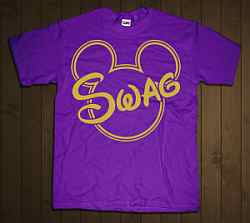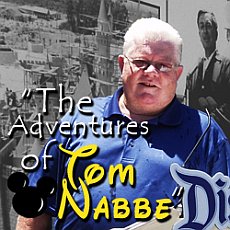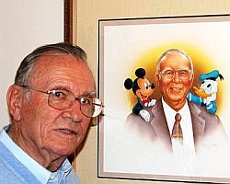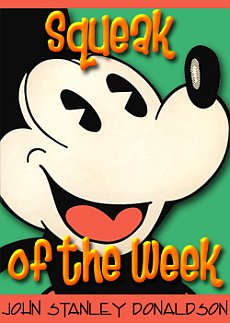FROM: Castle Chat A Disney Dispatch Feature
Disney Producer Robert Garner, Part 1
Is it possible to be a Disney legend without being a Disney Legend? Well, yeah! And Robert Garner is one of them. Bob has written, directed, and produced some of Disney's seminal short films and featurettes. And so much more. Let's start at the beginning...
Bob Garner has led an amazing life. He was a drummer in a rock band (remember "Red Rubber Ball"?), a production assistant for CBS where he learned the business from the likes of Carol Burnett and Red Skelton, and finally a master-of-most-trades for Disney over a period of nearly twenty years.
At Disney, Bob wrote, directed, and produced countless featurettes and short films. He was a pioneer of the CircleVision technique, he co-authored the best-selling 25th anniversary book Disneyland: The First Quarter Century, and he worked alongside Dr. Robert Ballard (who located the wreck of the Titanic) at the Living Seas in EPCOT. And that's just scratching the surface.
I spoke recently with Bob for a couple of hours, and came away with so much material that I couldn't fit it into one Castle Chat. So welcome to the first multi-chat! In three parts, we'll get to know just a little about Bob Garner, Disney legend.
Tell me about young Bob Garner. Goody two-shoes or troublemaker?
BOB: As a kid, and especially in middle school, I was ADD, though back then they just called it trouble.
I was imaginative, a little wild; I never did anything truly horrible, but I was mischievous and interested in everything but school. Well, that's not true - there were a few things in school that did interest me, and in those things I did fine.
My right brain was always dominant. I loved to write, but unlike my brother, who is left brain dominant, couldn't pass organic chemistry to save my life. (And he can't write a creative sentence to save his!)
As I got older, I buckled down in school, and got my degree. But it was tough. I was an artistic, sensitive kid, and in those days, artistic, sensitive kids weren't understood, and often not tolerated.
For instance, when I was thirteen, many of the other kids were playing sports or doing other 'normal' things, but I was replicating a dark ride. I built a door where you'd go into the ride, another where you'd go out. Before it was done, no one knew what to make of it, but pretty soon the neighborhood kids were coming over to check it out. Then I'd put on shows, and soon after that started building miniatures.
When I was young, we lived part of the year near the winter quarters (nowadays a housing development) of Ringling Bros. Barnum & Bailey Circus, and one of my first miniatures was a half-inch scale model of their big top.
What drew you to the circus?
BOB: I wasn't IN the circus, actually. Just close to it. Ringling's winter quarters were right along the rail line in Sarasota, not far from our home, and the performers were always there, along with a menagerie of the circus animals. I'd go to watch the performers practice. I got hooked on the logistics of the circus.
When I was about five, Cecil B. DeMille came down to film The Greatest Show on Earth. He brought his whole company from Los Angeles to Sarasota. I watched the movie being made. I was too little to know exactly what was happening, but when you're five, you're impressionable, and I still remember those days vividly.
For the film, Ringling Bros. put up their big top, which they rarely did during the winter (it was considered bad luck), and that made it even more fascinating to me.
Why do you suppose the circus went on hard times?
BOB: Around 1957, the Feld family bought the show from John Ringling North, who was running out of money and couldn't find large enough lots to house the circus when he tookit on tour. Also, the labor laws were changing, and it wasn't as easy to turn a profit as it had been years before. The show was dying.
The Felds were promoters. Their acts included Paul Anka, the Caravan of Stars, and so forth. They had lots of money. They bought the circus because they wanted to adapt it to indoor arenas. That meant no more big top, and only stock tents in parking lots for the animals. They moved their winter quarters from Sarasota to Venice, Florida, and then to Tampa.
Didn't there used to be a circus theme park in the area?
BOB: The theme park - Circus World - had nothing to do with the real circus. I went to it, but never felt comfortable. I was working for Walt Disney World at the time (in fact, I was at the park's grand opening), and I just had a feeling that a circus theme park wouldn't be able to compete with Disney World and the other attractions that were being built in the area. Too much competition. And by that time, popular interest in the circus had waned.
(Editor's note: For more about Circus World, check out Benson Myers' column, It's All in a Nametag.)
After the circus, but before Disney, you got your start at CBS.
BOB: I had no real responsibilities when I graduated from college, and so I decided to head out to Los Angeles and take a summer job with CBS Studios. My parents rolled their eyes. At the time, I was playing drums in a local rock group, and we were flown out to Los Angeles to appear on a television show. That got me interested in production, and that landed me a job at CBS.
The rock group, by the way, was called the Wunz, and we had two songs that were moderately popular: "If I Cry" and "Please". I was also the session drummer for "Red Rubber Ball", recorded by The Cyrkle.
Anyway, I got my summer job, and people told me I was nuts. My parents thought I'd get it out of my system and be back home in two weeks. (It's now been 40 years!) I was fortunate to work for CBS, first as a backstage page, then as a production assistant for "The Carol Burnett Show" and "The Red Skelton Show".
They were good, nurturing people, who took the time to help me along. Red Skelton, in particular, gave me good advice that led to my first big breaks in the business.
And then you were picked up by the Mouse.
BOB: Yes. I got my degree in Television Film Arts and Sciences, with a minor in Journalism, but Billy Long (Director of Marketing) at Disney hired me because I had also studied marketing extensively, and they wanted me to help them with short films and with marketing campaigns for both Disneyland and Walt Disney World.
I started at Disneyland and had my office there, but I spent a lot of time at the Burbank studio and in Imagineering. Marty Sklar then set me up with WED, and I moved there from Disneyland. I was happy with the transfer, because my primary interest wasn't marketing but rather television and film production.
My first assignment was a "Glimpse Behind the Dream", a short film about how things were done in Imagineering (storyboards, miniatures, MAPO, and so on).
Was that produced for TV or was it internal?
BOB: For televsion: it was a featurette released with Jungle Book. Then I did another short film called "It Could Only Happen at Disneyland" (about 3 minutes long) in the form of a music video - pioneering for those days! - that was included with a few films, such as Pete's Dragon - which internally we called Pete's Drag-On. The film division wasn't at its best in those days.
Did you do all the work on those short films?
BOB: Yes, in those days I did. It was before Eisner, Wells, and Katzenberg. Imagineering hadn't yet been unionized, and the only union requirement we had to meet was to hire an Orange County grip who'd come and sleep in his truck.
Mostly, though, I was the writer, working in the Concepts division, and only later did I make it into the Film Production department (my dream job!) where I learned CircleVision and other cutting-edge (at that time) techniques. Once I had those techniques under my belt, Disney had me direct the Electrical Parade - on 35mm film! I had cameras on all the rooftops. That footage still has my name on it, and it's still used. It looks beautiful on that 35mm film.
Back then, however, it almost got me fired, because I had crews all over the place and lights in everyone's eyes. Disneyland Operations complained and wrote scathing letters to my boss. But they still use the footage.
I'm also the one who put Mickey Mouse on top of Spaceship Earth. From above, in a helicopter, it looked as if he was going into (or out of) a hatch, waving. Dick Nunis called Marty Sklar to complain, and I got a talking-to about it. But they still use that footage, too.
Another time they had me produce some TV spots from my footage. Some of the spots were for Disney World, but my footage had been shot in Disneyland. The angles, though, made it impossible to identify the castle (it had been shot out-of-focus) and Main Street looked mostly the same. No one really seemed to notice.
What was your title at Disney?
BOB: I had several, including writer and producer. Disney wasn't hung up on titles. They wanted to get the most out of me. So, for example, when I went to Imagineering, I suddenly became an executive media producer in charge of all the shows and films done inside the Living Seas. My title tended to change with the different jobs they gave me.
Is that it? No! We're just getting started.
Bob had a long, long career at Disney ahead of him, and we'll touch on a few of its highlights in the second part of our Castle Chat, tomorrow.
While you're waiting, why not make plans to attend the Disneyana Fan Club 2011 Convention, where you'll not only be able to meet Bob Garner in person but also other Disney luminaries such as Disney Legend Alice Davis, Disney Historian Jim Korkis, Disney Author Don Peri, and lots more!






 Rolly Crump
Rolly Crump






